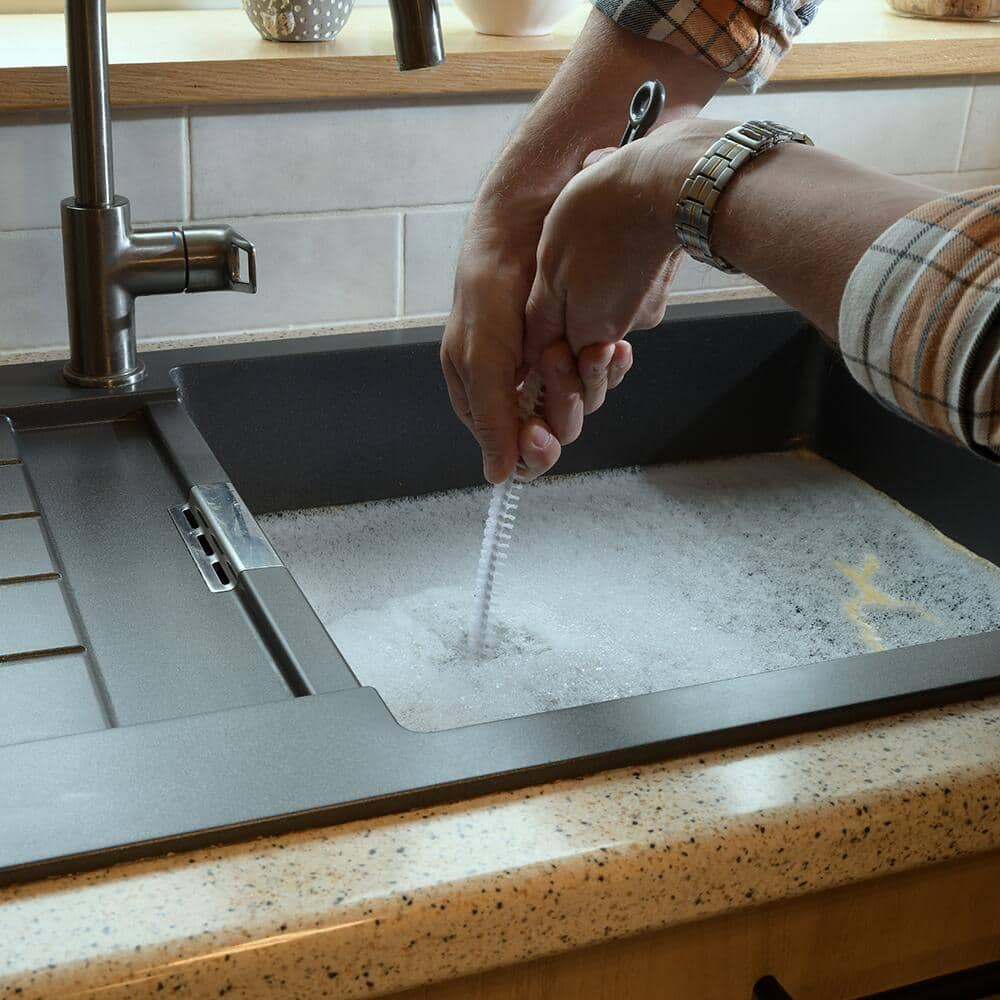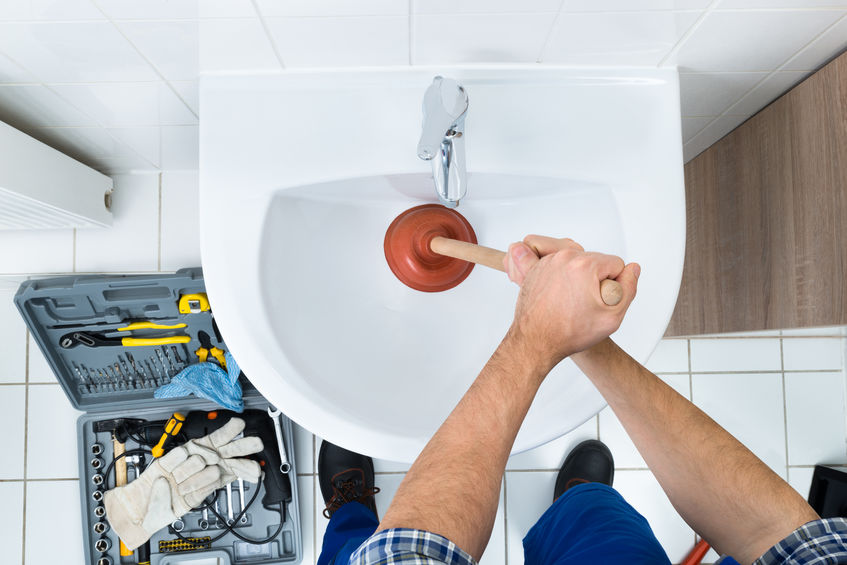Efficient Plungers and Drain Cleaners Techniques: Top Approaches
Efficient Plungers and Drain Cleaners Techniques: Top Approaches
Blog Article
Everyone will have their unique way of thinking with regards to A Guide to Plungers (and How to Use Them).

Introduction
Proper upkeep of household drains is essential for protecting against obstructions and making certain smooth water flow. One of the trick devices in every home owner's toolkit is the bettor, alongside various drain cleansers made to deal with stubborn obstructions properly. This short article explores just how to utilize bettors and drain cleansers successfully to keep your drains pipes flowing easily.
Section 1: Recognizing Plungers
Sorts of Plungers
There are several kinds of bettors offered, each made for different kinds of drains pipes and clogs. One of the most usual types consist of mug plungers, flange plungers, and accordion bettors.
Just How Plungers Work
Plungers service the concept of creating pressure and suction to remove blockages. When effectively used over a drain, they create a vacuum that can pull out debris or break up obstructions.
Selecting the Right Bettor
Choosing the ideal bettor relies on the sort of drainpipe and the nature of the blockage. Mug plungers are suitable for sinks and bathtubs, while flange plungers are better suited for toilets as a result of their layout.
Typical Mistakes with Plungers
Staying clear of these blunders makes certain effective plunging: inappropriate seal around the drainpipe, insufficient pressure, and unclear surrounding debris.
Section 2: Using Plungers Successfully
Prep work
Before diving, make certain the plunger covers the drainpipe totally and forms a limited seal. Clear any noticeable debris around the drainpipe opening.
Technique
Beginning with gentle diving motions to develop suction. Increase pressure progressively, using a consistent rhythm. Repeat as necessary up until the drainpipe clears.
Fixing Tips
If diving doesn't work, attempt readjusting the seal, applying petroleum jelly for a much better seal, or making use of a various type of plunger.
Section 3: Recognizing Drainpipe Cleaning Company
Types of Drain Cleaners
Drain cleaners can be chemical or enzymatic. Chemical cleaners utilize solid chemicals to liquify blockages, while chemical cleaners utilize natural enzymes to break down organic matter.
How Drain Cleaners Work
Chemical cleansers respond with blockages to dissolve them, while enzymatic cleaners break down natural products like hair and oil without hurting pipes.
Safety and security Factors to consider
Always wear handwear covers and eye defense when using chemical drainpipe cleaners. Guarantee adequate air flow and comply with maker guidelines very carefully.
Eco-Friendly Alternatives
Take into consideration using vinegar and cooking soft drink or enzyme-based cleaners for environment-friendly choices that are more secure for pipes and the setting.
Section 4: Using Drain Cleansers Effectively
Application Techniques
Pour chemical cleaners directly into the drain opening. Enable them to help the advised time prior to purging with warm water. Chemical cleansers must sit overnight.
Safety measures
Prevent mixing different types of cleansers, as this can generate poisonous fumes. Never ever utilize chemical cleaners in conjunction with a bettor, as spilling can happen.
Dealing With Persistent Obstructions
For consistent blockages, think about utilizing a plumbing snake or calling a professional plumber to prevent damages to pipelines.
Final thought
In conclusion, understanding just how to utilize plungers and drainpipe cleansers efficiently is important for maintaining healthy and balanced plumbing systems. By picking the right devices and techniques, home owners can deal with minor blockages and avoid significant plumbing problems down the line.
How To Properly Use A Plumbing Snake To Clear Drains
When any drain clogs in our home arise, we tend to gravitate toward the plunger and little else. In cases where the plunger and its vacuum-created pressure are not able to clear clogs, many immediately move to harmful chemicals or simply call their plumber to fix the issue.
we’re happy to help with all drain cleaning needs and concerns. This includes informing you on a few other home remedies you may have at your disposal for minor to moderate clogs, one of which is the use of a plumbing snake. Many people have never used one of these before – let’s go over the steps to take when your drain clogs and you have a plumbing snake available.
Attempt Plunger Use
The first step here, as we noted above, should indeed be to grab your plunger when you notice a drain clog and attempt to resolve it this way. If you’re unsure how to use a particular type of plunger, our plumbers can answer any questions you have. If this doesn’t do the trick, however, you move on to the snake.
Locate And Prepare Snake
A plumbing snake is a metal or plastic device that’s generally about a quarter of an inch thick. It’s design with significant extensions, meant to reach down into your clogged drain and push the clog out. Snakes also contain drain augers that will latch onto and push stubborn blockages.
If your plunger doesn’t clear a clog, locate your snake and bring it to the drain in question. We also recommend keeping a bucket nearby to collect the clog once you pull it out, plus we’d advise wearing goggles and possibly protective gloves.
Feed Snake
Once you’re ready to go, feed the snake slowly down the drain, using the crank device it comes with to keep it moving until it finds the clog. Once this happens, much of the clog will be latched onto the coil so you can pull it out, while the rest will simply break up and flow downward.
Detach Debris
Remove the snake slowly from the drain, and once you’ve done so, pick off any debris that’s stuck to the coil. This is another area where wearing gloves is a must.
Flush Drain
Finally, take a few minutes to ensure the snake has done its job correctly. If you’ve been using it on a toilet, flush the toilet a couple times and make sure everything flows well. If you’ve used it on a different drain, flush it with some room temperature water.
https://www.mybuddytheplumber.com/blog/how-to-properly-use-a-plumbing-snake-to-clear-drains/

Application Techniques
Pour chemical cleaners directly into the drain opening. Enable them to help the advised time prior to purging with warm water. Chemical cleansers must sit overnight.
Safety measures
Prevent mixing different types of cleansers, as this can generate poisonous fumes. Never ever utilize chemical cleaners in conjunction with a bettor, as spilling can happen.
Dealing With Persistent Obstructions
For consistent blockages, think about utilizing a plumbing snake or calling a professional plumber to prevent damages to pipelines.
Final thought
In conclusion, understanding just how to utilize plungers and drainpipe cleansers efficiently is important for maintaining healthy and balanced plumbing systems. By picking the right devices and techniques, home owners can deal with minor blockages and avoid significant plumbing problems down the line.
How To Properly Use A Plumbing Snake To Clear Drains
When any drain clogs in our home arise, we tend to gravitate toward the plunger and little else. In cases where the plunger and its vacuum-created pressure are not able to clear clogs, many immediately move to harmful chemicals or simply call their plumber to fix the issue.
we’re happy to help with all drain cleaning needs and concerns. This includes informing you on a few other home remedies you may have at your disposal for minor to moderate clogs, one of which is the use of a plumbing snake. Many people have never used one of these before – let’s go over the steps to take when your drain clogs and you have a plumbing snake available.
Attempt Plunger Use
The first step here, as we noted above, should indeed be to grab your plunger when you notice a drain clog and attempt to resolve it this way. If you’re unsure how to use a particular type of plunger, our plumbers can answer any questions you have. If this doesn’t do the trick, however, you move on to the snake.
Locate And Prepare Snake
A plumbing snake is a metal or plastic device that’s generally about a quarter of an inch thick. It’s design with significant extensions, meant to reach down into your clogged drain and push the clog out. Snakes also contain drain augers that will latch onto and push stubborn blockages.
If your plunger doesn’t clear a clog, locate your snake and bring it to the drain in question. We also recommend keeping a bucket nearby to collect the clog once you pull it out, plus we’d advise wearing goggles and possibly protective gloves.
Feed Snake
Once you’re ready to go, feed the snake slowly down the drain, using the crank device it comes with to keep it moving until it finds the clog. Once this happens, much of the clog will be latched onto the coil so you can pull it out, while the rest will simply break up and flow downward.
Detach Debris
Remove the snake slowly from the drain, and once you’ve done so, pick off any debris that’s stuck to the coil. This is another area where wearing gloves is a must.
Flush Drain
Finally, take a few minutes to ensure the snake has done its job correctly. If you’ve been using it on a toilet, flush the toilet a couple times and make sure everything flows well. If you’ve used it on a different drain, flush it with some room temperature water.
https://www.mybuddytheplumber.com/blog/how-to-properly-use-a-plumbing-snake-to-clear-drains/

As a passionate person who reads on How to Use a Plunger to Unclog a Toilet or Drain, I assumed sharing that excerpt was a good thing. For those who liked our blog post if you please don't forget to share it. We value reading our article about How to Unclog Your Sink with a Plunger.
Call Today Report this page